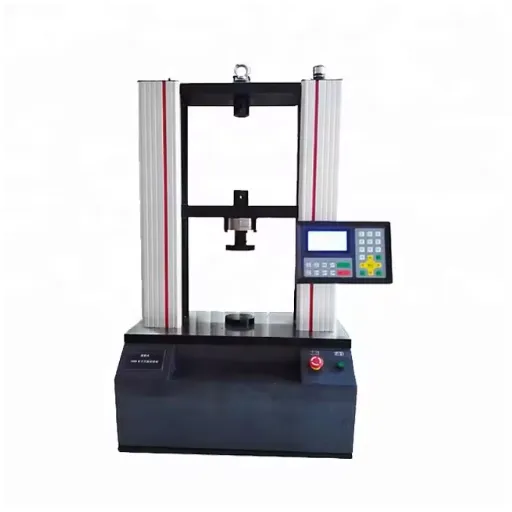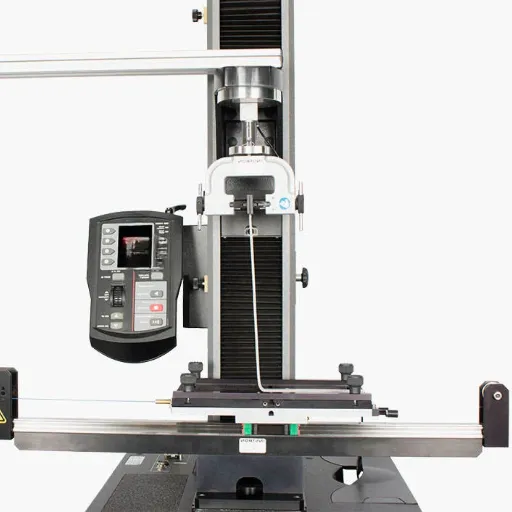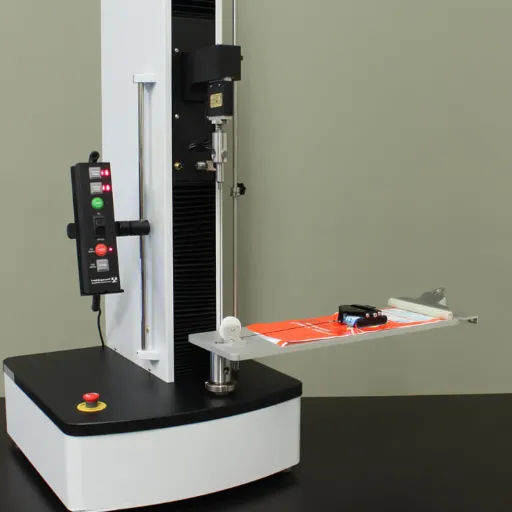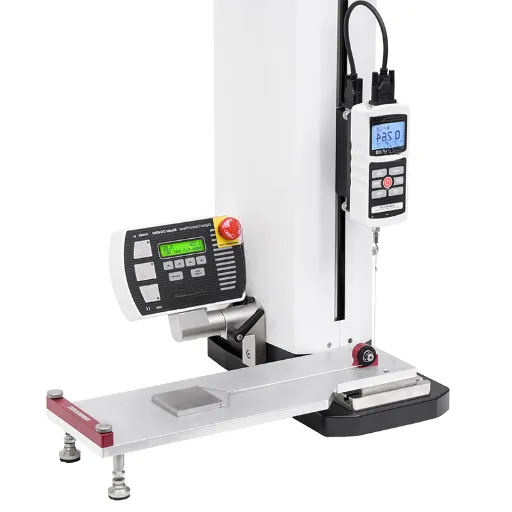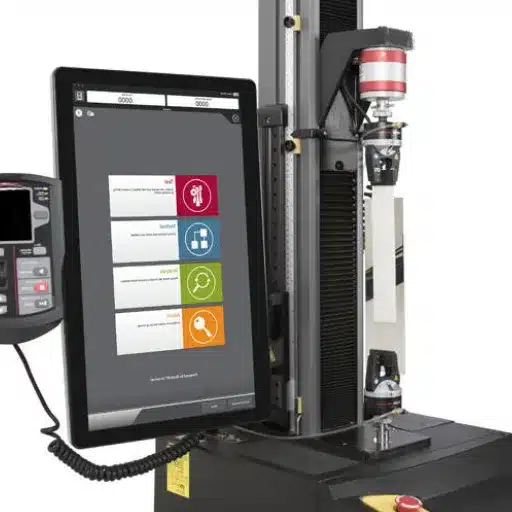The strength of iron ore pellets is vitally important for efficient steel production. The blast furnace requires iron ore pellets to maintain integral self-sustaining gaseous pores during reduction. Compression testing is an essential quality control step to ensure required strength for pellet transportation, handling, and use in blast furnaces. This blog post discusses the iron ore pellet compression tests and modern compression test machine technologies. You will understand how these machines function and what they disclose about the performance of the pellets. From there, you will appreciate the efforts taken in steel manufacturing to uphold a high quality standard. Stay with us as we delve into the significance of these tests and their impacts on achieving industrial goals.
Introduction to Iron Ore Pellets
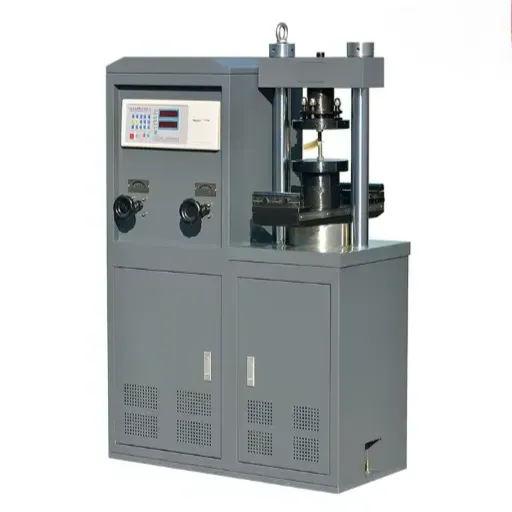
What are Iron Ore Pellets?
Iron ore pellets are small, ball-shaped pieces of iron ore that have been processed to improve their physical and chemical properties for steel production. Pellets are made by compressing iron ore fines together with binders and other additives and heating the mixture to high temperatures. This yields strong and durable pellets which are more economical to transport and handle than raw iron ore.
The benefits of iron ore pellet production is to enhance their performance in blast furnaces and direct reduction reactors, which are crucial for steel production. The consistent size and shape of pellets provide more predictable melting and reduce the energy required for these processes. Furthermore, pellets produce less dust during handling and transportation, thus improving the environment and efficiency of production.
Compression tests are essential to understand iron ore pellet strength and durability. The compression tests illustrate the mechanical forces that the pellets undergo during shipping, storage, and the high-temperature metallurgical process. With knowledge of the compression strength, producers can maintain quality assurance of the pellets, as well as their utilization in multiple industries, which is beneficial in the production of good steel.
Importance of Iron Ore in Industry
The fuel characterization of iron ore and pellets is essential in determining the quality of the pellets for use in the blast furnaces. The fuel character of a pellet is the measure of the endurance of the pellet upon application of any mechanical force or pressure. Such strong pellets are vital for transportation, storage, and use in the high pressures of blast furnaces with minimal fuel breakage.
The use of such specialized equipment enables the iron ore producers to maintain uniform quality of the iron ore pellets, which greatly affects the efficiency of the pellets in the steelworks. The use of weaker pellets can cause a lot of problems in the steelworks. With proper testing, the cost of wastage and operation can be greatly minimized. Proper testing will provide useful information on the dispersion of the pellets, which will enable the manufacturers to adjust to the production methods.
In addition to this, the test machine assures that the testing of fuel characters is done with accuracy along with consistency, which improves the dependability of the testing which is necessary for the quality testing. The demands of quality testing with more stringent requirements is met with the newer compression fuel character test machines which, in addition, provide better accuracy and ease of use.
Overview of Pellet Compression Testing
Pellet compression testing is crucial for properly assessing pellet quality, especially in terms of mechanical strength and durability. Knowing the crushing strength of a single pellet is essential in describing the quality and consistency of the pellet product as a whole. With data on the crushing strength of the pellets, the manufacturer is assured that the product can sustain the rigors of pellet handling, transportation, and use.
The test consists of isolating a pellet and placing it on a plate. A second plate then descends with calibrated pressure, gradually increasing until the pellet breaks. The numerical value of the fracture pressure serves as a metric of the pellet’s resistance to external forces. With accurate data, manufacturers can pinpoint and troubleshoot quality issues early enough on and refine production to improve pellet characteristics.
Pellet compression testing offers essential quality metrics that assure product repeatability and operating life. These metrics also ensure that the pellets comply with the purpose and with all ordinances and guidelines that govern their use. Without a doubt, pellets from a variety of sectors such as energy generation and processing of pharmaceuticals depend on the compression testing to verify the suitability of pellets.
Functionality of Pellet Compression Testing Machines
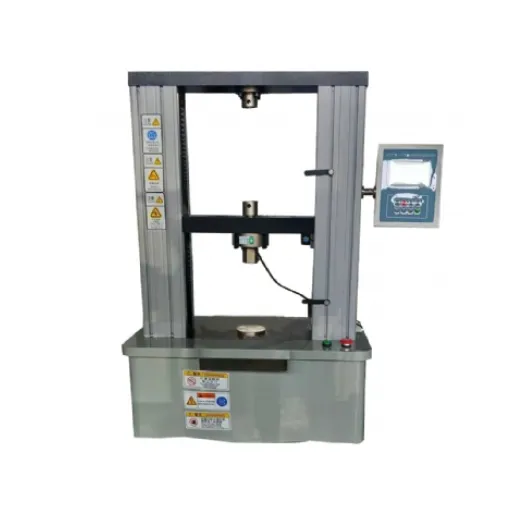
How the Compression Test Machine Works
The iron ore pellet compression test machine functions by testing the iron ore pellets for their ability to bear weight, without breaking. This is done by applying a calculated force to the pellets one at a time. This process is important as it tests the mechanical strength of the pellets which is commended for efficient transportation, handling, and usage in steel production and other industries.
Testing begins by placing a single pellet on the prescribed testing platform of the machine. A compression plate then moves downward to exert an increasing force on the pellet, ensuring the rate of force application remains constant. The force needed to compress the pellet is measured by the machine’s sensors, which capture essential information about the pellet’s resistance to mechanical stress. This information is then stored and assessed to check if the pellet complies with required specifications for strength and durability.
Compression testing of the pellets enables manufacturers to address faults associated with the pellet manufacturing process. By setting the appropriate strength limits, pellet manufacturers can guarantee optimization of later operations, such as smelting, which depends on the integrity of the pellets. Testing as outlined ensures that the final product complies with the relevant regulations and the functional requirements.
Key Features of Compression Strength Testing Machines
The intelligence quotient or IQ systems are developed fully to test and understand the durability of a certain structure, for example, a pellet, when a certain force is applied to it. These types of systems are very important for quality assurance in diverse industries such as construction, mining, and manufacturing as this helps to improve the quality of the products the industries are manufacturing.
Advanced Measuring Capabilities
A very unique feature of the system is the ability to measure IQ levels and other compressive forces. The IQ measuring systems are equipped with modern measuring devices, and the systems offer quality data collection and organization during the testing period. This enables the industries to test the quality and breaking points of different types of materials and ensure that they meet specific set standards in the industries.
Multi-Sample Testing
Another unique feature is the ability to fit and test different IQ levels and test different samples at the same time. For IQ levels and compression strength testing, systems are equipped with modern measuring devices, which, when combined with data collection during testing, offer quality data collection and organization during the testing period. Such systems offer great and efficient services to different industries, and in addition, they enable the users to order the software that comes with different systems for more efficient data analysis.
The system, as well as all the other components integrated, have to offer great performance and have to be easy to maintain. The systems are designed to use strong metals which help in maintaining the performance of the system during long working hours. The systems are also designed to help the users in performing simple and ineffective maintenance procedures which help in maintaining the systems good working condition for long.
Types of Tests Conducted
In order to justify the use of iron ore pellet compression test machinery and the pellets themselves, specific tests need to be carried out for quality assurance. The said quality assurance tests serve to assess the product’s industrial durability, the quality of the pellets, and their effectiveness.
1. Compression Strength Test
Completing this test allows measurement of force on a single iron ore pellet. It gives details about the mechanical strength of the pellets and their overall structure. This is important to guarantee that iron ore pellets can be handled, shipped, and used without any fragmentation.
2. Abrasion Resistance Test
This test is used to determine the resistance a pellet has to wearing out. Its importance is to guarantee that the pellet maintains its shape and function to provide uniform furnace performance throughout its life.
3. Crushing Load Test
The crushing load test measures the greatest weight a set of pellets can sustain before giving in. This test is critical in ensuring that the pellets are of a certain quality and uniform so that minimal problems are encountered during metallurgical application.
Such tests are imperative to establish the compliance of iron ore pellets with industry requirements as well as usability in high performance projects, thus guaranteeing dependable and efficient production results. In addition, they assist in the upkeep of machinery as well as ensuring dependable operation in the future.
Benefits of Using Pellet Compression Test Machines

Maintaining Quality Standards
The role that iron ore pellet compression test machines play in quality control is fundamental. They provide valuable information on the mechanical characteristics of the pellets. The machines provide an estimation of the compressive strength of individual pellets which is very important for its use in industries. By breaking the pellet and attempting to deform it using a controlled load, the machine provides an estimate of the strength of the pellet.
Using this method, pellets that do not meet strength requirements are weeded out from the production stream. The use of stronger pellets significantly reduces the chance of breakage during handling and shipment, and also increases the efficiency of blast furnaces and direct reduction plants. Through compression tests, the results also indicate if there are defects in the manufacturing process, and thus the manufacturer can take the necessary measures to correct them and ensure a uniform product.
Machines that test the compression of pellets also help in the upkeep of machinery and also help in the efficiency of operations. These machines confirm the durability of pellets, thus reducing the chances of having a pellet that can cause a blockage or can damage the industrial system. Consequently, these systems can go through production cycles without interruption. This standard of quality control enhances the dependability of the operation, and reduces the equipment costs, which arise due to wear and tear, as well as downtime, and complies with industry regulations.
Enhancing Production Efficiency
Iron ore pellet compression test devices are vital for preserving the functionality and quality of iron ore pellets in an industrial environment. Such devices enable the testing of the strength of pellets as well as their resistance to crushing forces. This is important in order to validate the usability of iron ore pellets in furnaces and to assure that transportation does not damage them. Having an iron ore pellet compression test device enables the testing of the mechanical components of the pellets, allowing easier identification of pellets that may break and create industrial problems. This helps industrial processes run smoothly.
A major advantage of these devices is the ability to increase production efficiency. They achieve this by testing and confirming that pellets possess sufficient durability, which in turn diminishes the chances of equipment breakdowns due to the collapse of weaker pellets during production cycles. This aids in achieving the production targets. In addition, metallurgical processes run more efficiently and yield higher quality end products due to the consistency in metallurgical quality. This offers the producer an added advantage.
In addition, such testing is necessary to comply with industry and safety standards and regulations. Meeting the energy inefficiency, contamination, and other risks with reduced pellet quality benchmarks helps to uphold their brand image within such competitive industries. These operational and environmental regulations are also met. Industries are better able to manage their production, pellet quality, sustainability, and reliability with incorporation of pellet compression test machines to their production systems.
Reducing Material Waste
Iron ore pellet compression test machines cut down on material waste during production for a number of reasons. For one, these machines make sure that pellets are structured strongly enough in advance to deal with the different stresses of transport and usage. In addition, breakage and material loss is cut down on a lot, because the advanced testing of iron ore pellet compression enables makers to fix weak points early on. This saves materials and streamlines operations.
Using a pellet compression test machine helps maintain consistent standards in the production of iron ore pellets. When strength is consistent and uniform amongst the pellets, performance of the pellets is less unpredictable and variability is reduced, leading to smoother processes later on. Not only does consistent quality improve the utilization of materials, but it also streamlines the entire manufacturing process, enabling companies to meet environmental and operational compliance regulations.
Moreover, these machines aid in sustainability initiatives by reducing the need to discard low-quality pellets. Industries can lessen the production of waste materials by lowering the unusable materials through accurate measurement and durability assurance of pellets. Waste reduction is not only in compliance with ecological norms, but it also reinforces cost-cutting in the long run by utilizing raw materials more efficiently. Pellet compression test machines are an example of new technology that enables industries to better address environmental concerns while maintaining high standards of production.
Applications of Iron Ore Pellet Compression Tests
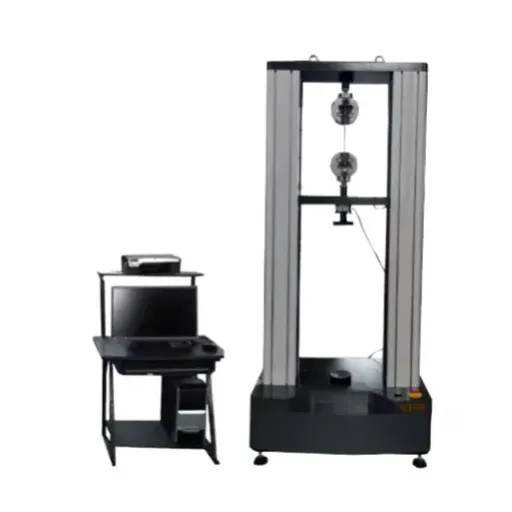
Industries Utilizing Compression Testing
The use of iron ore pellet compression test machines is vital in industries where the quality of materials determines the seamless flow of production. One such industry is the steel and iron production industries that use such tests to maintain the normal functionality of blast furnaces. Such tests ensure that the pellets are durable and can, therefore, stand the blast furnace operations without countersinking into fines.
Further to this, mining industries also make use of compression tests to help classify and evaluate the quality of the iron ore pellets that they produce. The information obtained through such testing is helpful to enhancing pellet production methods in an attempt to achieve consistent quality, something very important in Pelts standards. Such test information is also helpful in improving the balance of the production ingredients, thereby allowing the production to be optimized and waste minimized.
In addition, the compression test is useful in the advanced research and development (R&D) centers of pellets made of iron ore. The innovation and refinement of the iron ore pellets are dependent on such tests as it allows for the trial of different binders and additives, as well as ensures the R&D teams that the iron ore pellets will perform well in the various production environments. It leads to improved production and greater sustainability of the manufacturing and resource extraction processes.
Research and Development in Iron Ore Processing
The iron ore pellet compression test machine is instrumental in evaluating the mechanical strength and durability of iron ore pellets. This test equipment is created to impose measured compressive loads to pellets, assessing their capability to endure handling and transportation loads. This device ensures that the pellets preserve their structure throughout manufacturing and logistics, and therefore aids the manufacturer.
The research and development in pellet manufacturing rely heavily on the data obtained from the compression tests. The information obtained from the tests permits the R&D teams to fine-tune the iron ore pellet composition, allowing them to change the binder types, moisture levels, and the particle size distribution to improve the pellet quality. This fine-tuning guarantees that the pellets comply with the mechanical strength requirements of the industry while being more eco-friendly, as it cuts down on pellets that are discarded and promotes the use of raw materials.
Moreover, compression test machines enable better quality control by spotting defects in the earlier stages of production. This reduces disturbances to operations, improves product uniformity, and guarantees that the product will function as expected in other uses, like steel production. The improvements assist the producers, and foster a more eco-friendly and effective supply chain in the iron and steel industries.
Regulatory Compliance and Standards
In the iron and steel sectors, iron ore pellet compression test equipment is vital in terms of compliance with regulations. Pellet compression test equipment is built to determine the mechanical strength of iron ore pellets and to check whether it complies with the given specifications for industrial usage. Pellets are subject to several iron ore pellet regulatory frameworks that ensure quality durability, work efficiency, and safety standards. Compliance with such test equipment allows producers to maintain such regulations with ease.
The strength of iron ore pellets is often measured by a standard method of testing such as ISO 4700. Having these specifications provided makes it easier to have a uniform procedure of testing for global use. This enables manufacturers to comply with international trade requirements. Meeting such a standard confirms that the pellets are capable of withstanding mechanical and thermal impact during transportation, storage, and the steelmaking metallurgical processes.
With consistent testing using compression test machines, manufacturers can notice and fix quality problems as they happen, reducing the chance of breaking regulations. In addition, adhering to these regulations improves the company’s brand as well as the reliability. As a result, producers aid in the safety and efficiency of other aspects of the industry through their continued compliance.
Selecting the Right Testing Machine for Iron Ore Pellets
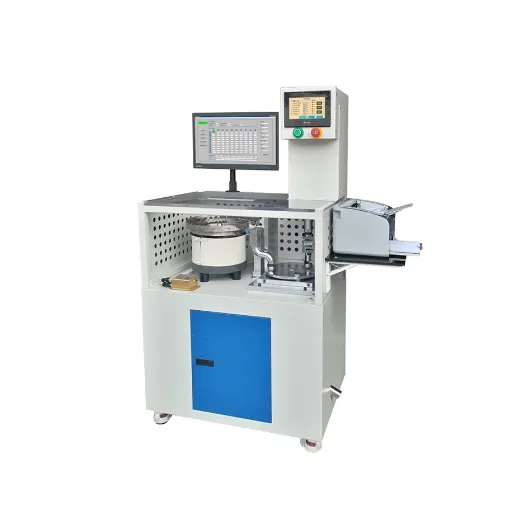
Key Considerations for Choosing a Compression Tester
1. Machine Capacity and Load Range
When choosing a compression tester for iron ore pellets, begin with understanding the machine’s capacity and load range. Iron ore pellets demand a pellet testing device that can exert and measure high force. For the sake of accuracy in compressive strength determination, having appropriate load capacity is a prerequisite. An appropriate load capacity ensures reliable results and deters the device from overloading or underperforming, which should be a priority.
2. Accuracy and Repeatability
Next, pay attention to the accuracy and repeatability of the device. It is necessary that the compression tester delivers precise values over consecutive tests. This dependability is vital for the iron ore pellets quality assurance and haulage compliance. With proper efficiency, advanced sensors, and data recording enabled devices tend to perform better and yield more consistent results.
3. Robustness and Design
Consider the robustness and design of the equipment. The tester should be constructed from strong materials to endure the wear and tear of frequent use and the heavy loads associated with iron ore pellet tests. An intuitive interface and straightforward maintenance are equally essential since the equipment must be uncomplicated to operate and repair. This simplicity leads to less downtime and reduced operating expenses.
Comparative Analysis of Different Models
In attempting to evaluate the quality of crushing machines for iron ore pellets, one needs to consider a variety of other machines of a similar nature. Some of the factors that need to be considered include precision, durability, ease of use, and cost-effectiveness. High-precision models tend to have superior methods of measuring the compressive strength of the pellet. The compressive strength of the pellet is critical in its subsequent use in the processes. Models that have high precision tend to have better methods of measuring the compressive strength of pellets and ensuring that their suitability is met. Having precision models improves the reliability of quality control and makes it more effective to optimize pellet production.
| Feature | High-End Models | Mid-Range Models | Basic Models |
|---|---|---|---|
| Precision | Excellent | Good | Adequate |
| Durability | Superior | Good | Standard |
| Ease of Use | Advanced Interface | User-Friendly | Basic Operation |
| Maintenance | Low | Moderate | Regular |
The strength of a model is also an important factor to consider. Testing machines constructed from strong materials are scalable and are able to endure the rigorous testing conditions of long term testing. Such machines should also maintain good performance even when subject to large sample loads. Wear-resistant parts are generally preferred for compact designs as they decrease the frequency of component maintenance and replacement.
Finally, ease of use and price can greatly influence the choice. Advanced models of machines have intuitive user interfaces that are easy to operate, which decreases the probability of making mistakes, and also lowers the amount of training needed. Furthermore, having a low maintenance and well-maintained energy-efficient model helps in keeping the overall cost lower. Having a comparison of the models available in the market worrying these features guarantees the machine bought serves the purpose that the buyer has in mind, and in this case effective quality control of iron ore pellets.
Cost vs. Features: Finding the Best Fit
It is a good idea to evaluate the functionality and cost of an iron ore pellet compression test machine because it helps to strike a balance between the two. The machine in question should be easy to use and maintain and should also be a good stub for a reliable test. A machine that is of the best quality would be easy to use and maintain and would be a good stub for a reliable test. The device should be able to achieve its core goal with ease, which is to provide reliable and precise compression strength test results that are essential to quality control. For this critical goal, the machine must include all the essential features like precision sensors, a robust build, and simple interfaces with no compromise.
Budget Consideration
Earlier models may be less costly at first glance, but their lack of advanced features and sturdy build results in increased long-term expenses because of maintenance or replacement. Expensive models tend to have unnecessary features for the normal testing scenarios for which they are designed.
Smart Investment
An iron ore test pellet machine needs to be appropriate to the operation for which it is designed so it can be stripped of useless features hence reducing its cost. The choice should align with operational volume and testing frequency requirements.
The choice of the machine hinges on the volume and cadence of the operation. If it is a lesser volume operation or testing is required only once in a while, a basic machine with reliable core functions would do. In contrast, operations that demand a high volume and accuracy would require machines premium functionality, such as,” enhanced durability, automation, and data recording features to make testing easier.” Conducting a thorough cost-benefit analysis can help in identifying a machine that aligns with both the operational requirements and the budget.
Frequently Asked Questions (FAQ)
Q: What is a pellet compression testing machine?
A: Pellet compression testing machines test machines that are used in calculating the compressive strength and other mechanical properties of different types of pellets such as iron ore pellets. Pellet compression testing machines test the deformation a pellet undergoes when a force is exerted on it. Pellet compression testing is important for pellets both in the construction industry and the metallurgical research.
Q: How is Pellet Compression Testing done?
A: A pellet is to be tested is inserted into a pellet compression testing machine. The machine is then set to apply a load that is continuously increasing. The pellet compression testing machine then deforms or fractures the pellet and the elongation curve is recorded. The pellet compression testing machine then calculates the pellet’s compressive strength and other mechanical properties from the elongation curve.
Q: What are the standards for pellet compression testing?
A: Pellet compression testing often follows industry standards such as ASTM and ISO. Pellet compression testing has to adhere to these standards because they provide a broad outline to ensure that the pellet compression test is accurate. These standards are very important in ensuring that different pellet and compression machines are able to follow the most suitable and effective methodologies for compression.
Q: What is the importance of crush strength in pellet testing?
A: Crush strength is a crucial element in pellet testing since it indicates the ability of the pellet to sustain pressure without undergoing fragmentation. This is of great importance to other industries like iron ore where pellets need to sustain sustenance of the pellets.
Q: Can a universal testing machine be used for pellet compression testing?
A: A universal testing machine is well suited for pellet compression testing. They can accurately apply loads, measure deformations, and determine the compressive strength of various types of pellets, including iron ore pellets.
Q: How does calibration impact pellet compression testing?
A: Calibration is needed to confirm that the testing machine’s measurements are valid and offer precision. A calibration certificate serves as proof that the machine’s precision load cell and other components meet the set standards, which is mandatory for proper and valid tests.
Q: What type of data can be obtained from a pellet compression testing machine?
A: Such equipment would yield pellet data analyzing pellet compressive strength (fracture strength), deformation under load, and fracture characteristics. This machinery aids in the evaluation of mechanical properties, thus providing insight into pellet performance and quality.
Q: How does the compressive strength of iron ore pellets influence their performance?
A: Their compressive strength is an important parameter for their handling and transportation as well as performance in furnaces. Their strong compressive strength leads to less fragmentation and crushing while processing and good metallurgical results as well.
Q: Can a pellet compression testing machine be used to test for other materials?
A: Yes, because of its design for pellet testing, it can be used for any other material that requires compressive strength testing. This feature makes it useful for the construction, pharmaceutical, and materials engineering industries.
References
- WDW-QT10 Pellet Ore Pressure Testing Machine – Henstest
Details a machine designed for testing the compressive strength of pellet ore. - Cold Compression Strength (CCS) Test RB 1000 – RB Autom
Describes an automated system for testing the crushing strength of iron ore pellets. - Electronic Pellet Compression Testing Machine – Alibaba
Offers a variety of electronic pellet compression testing machines for different applications. - Iron Ore Pellets Compression Testing Machine – HRJ Test
Focuses on machines used for compression strength tests of various types of pellets.

